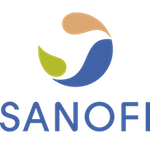Launch of a Comic Book to Fight the Exclusion of Children with Epilepsy
(3BL Media) July 3, 2012 - One million schoolchildren from 5 African countries will have access to the educational comic book “We’ll make it” launched in Kenya on the occasion of the first African Congress of epilepsy by the teams of Sanofi.
On the occasion of the 1st African Congress of epilepsy held in Nairobi (Kenya) from 21 to 23 June, which brought together nearly 300 participants from 51 countries, Sanofi and its partners, the Ministries of Health and Education and the NGO KAWE (Kenyan Association for the Welfare of People with Epilepsy) launched an educational comic book “We’ll make it”. Within a school campaign to fight the stigma surrounding epilepsy, this educational comic book will soon be available in 5 countries in Africa, with the aim to reach more than one million pupils from Benin, Kenya, Cameroon, Madagascar and Senegal.
Epilepsy is a public health problem. It affects about 50 million people worldwide1 including 10 million in Africa2. In many countries it is interpreted as a curse or a sign from evil spirits. These beliefs lead to stigma and exclusion, and discourage patients from seeking medical help.
This educational comic book, available in English and French, already launched in Benin in March, is now rolled out in Kenya. It will be available to primary schools, and it will allow schoolchildren aged 8 to 12 to better understand epilepsy and appreciate the stigma and exclusion it can lead to. The aim is also to involve them more to fight the myths and misconceptions related to this disease and share their new knowledge within their family.
"Sanofi is strongly committed to improving access to quality care for epilepsy," said Dr. Robert Sebbag, Vice President Access to Medicines, Sanofi. "Drugs alone are not enough. The comic book launched in Kenya fits within our public-private partnership activities which combine training of health professionals, educating patients and their families, informing populations, and providing medicines at preferential price to the most disadvantaged patients."
"With a tone which is light and accessible, creating a story around Lamine and Keifa, two kids who have epilepsy, and the universal theme of football, we wanted to tell a story that would reach the largest number of people, whatever their age or socio-economic background”, said Vincent Ringler, illustrator “We hope that the story of Lamine and Keifa help fight the stigma surrounding epilepsy and improve access to care for everyone needing treatment”.
About epilepsy 1
Epilepsy is the most common neurological disorder, with approximately 1% of the world population, 50 million people, suffering from it. It can happen at any age, however more than half of the cases start during childhood.
The disease is characterized by repetitive epileptic seizures which can range from “Grand Mal seizures”, where the whole body is affected by convulsions and which are easily recognizable, to less impressive symptoms such as “absences” (simple blackout), auditory hallucinations or localized muscular contractions.
The seizures can lead to a fall and/or a complete blackout which can be responsible of accidents such as burns or drownings.
Epilepsy can have numerous causes; the most important risk factors include: perinatal complications, head trauma, central nervous system infections and a family history of epilepsy.
This brain disease can be treated with medications which, in approximately 70% of cases, will totally prevent the occurrence of seizures.
About Sanofi Access to Medicines
The Access to Medicines department from Sanofi, through its program dedicated to epilepsy, mobilizes the expertise of the Company, to improve access to healthcare for the patients most in-need in developing countries.
Because drugs alone are not enough, Sanofi Access to Medicines is also involved with its local partners in developing training tools for healthcare professionals as well as educational materials for patients and communities.
Références :
- WHO – Fact Sheet n°999 – Jan 2009
- WHO – Epilepsy in the WHO African Region : Bridging the Gap - 2004

